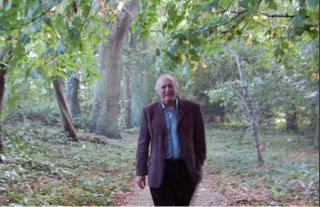
Shalini at
Scientia Natura has tagged me with the
evolution meme [
I've been tagged!]. The idea is to pick five postings that show the evolution of
Sandwalk from the time it first started until now.
This is going to be hard since my blog is less than one year old. Starting in the very first week I published an article on the sea urchin genome [
Sea Urchin Genome Sequenced and I've continued to post science articles all along. The biggest change occurred in January when I started combining Monday's Molecule with Wednesday's Nobel Laureates to develop themes for the week. Gradually these themes spread over into following weeks (e.g.
Blood Clotting). They began to take over my life!
My postings about atheism and religion haven't changed very much over the past year so there doesn't seem to be any evolution there. Many people will be upset by that since they would very much like to have changed my opinion! My interest in the influence of atheism and the confrontation with the "appeasers" was there from the very first weeks. The thing that's changed is that I now avoid the word "appeasers" and "Neville Chamberlain" whenever possible [
The Neville Chamberlain Atheists].
When I started
Sandwalk I blogged about Canada and local politics but not very often [
I'm Voting for Hurricane Hazel!]. I thought I should avoid being seen as too Canadian because it would scare off readers, especially Americans. Now I'm posting more on Canadian issues because there's a large Canadian audience out there and because non-Canadians don't seem to mind—some even find it interesting [
MMP: Debunking the Myths, Chastising the Fearmongers].
The biggest change has been the number of people who comment on
Sandwalk. In my opinion, some of the most interesting things on this blog are taking place in the debates and discussions that occur after an initial posting [
Plants, not Fungi, Are Most Closely Related to Animals?]. This was one of the things I wanted to happen since I'm coming from a newsgroup background but it didn't happen for the first six months. I realize now that you need a critical mass of readers in order to get a discussion going.
I tag:
easternblotPrimordial BlogRunesmith's Canadian ContentGenomicron [which has definitely evolved]
Sex, Genes & Evolution [which hasn't?]
Thoughts in a Haystack [which should :-)]














